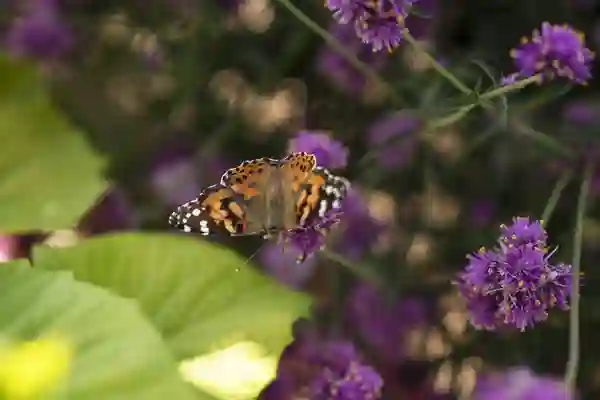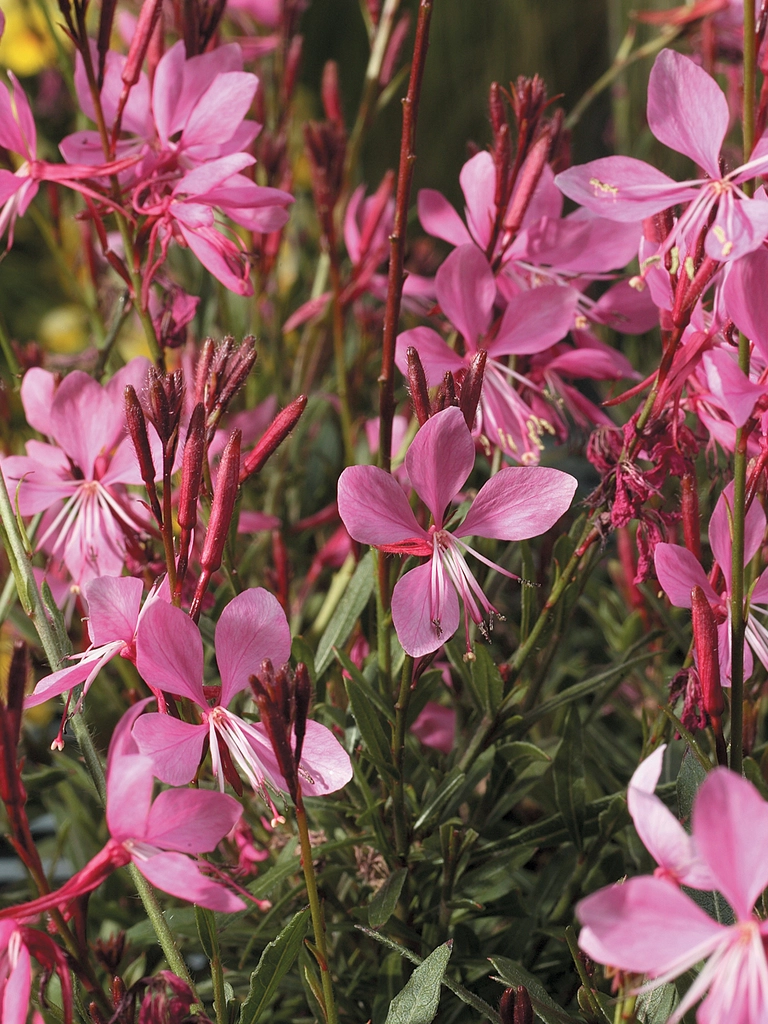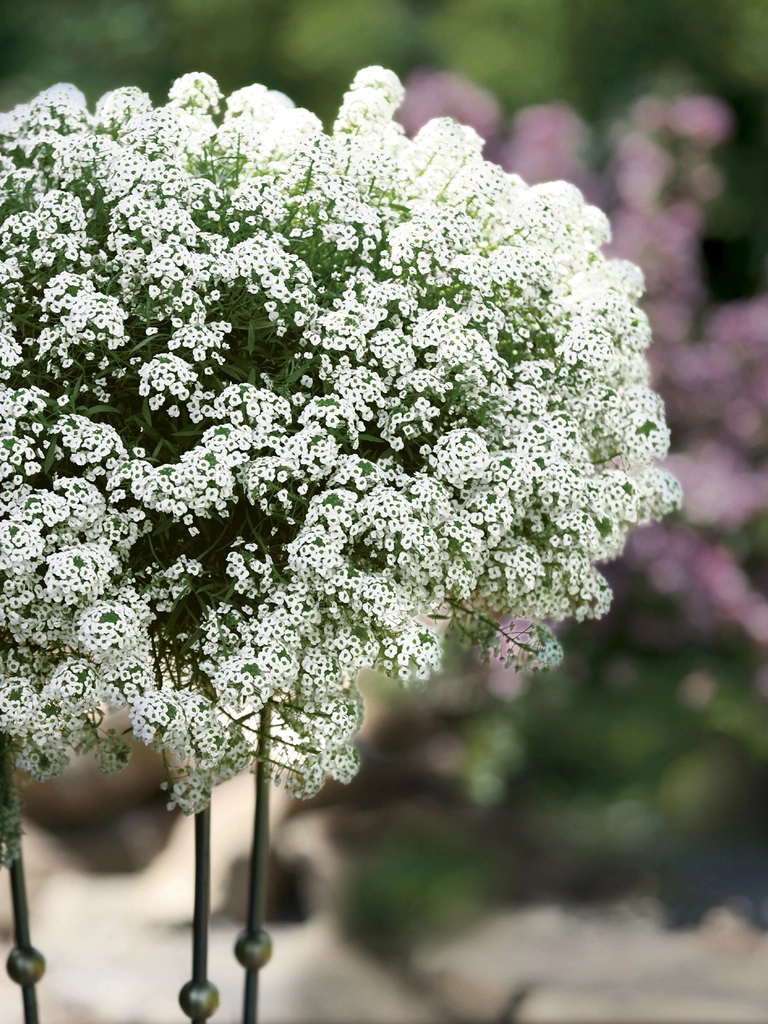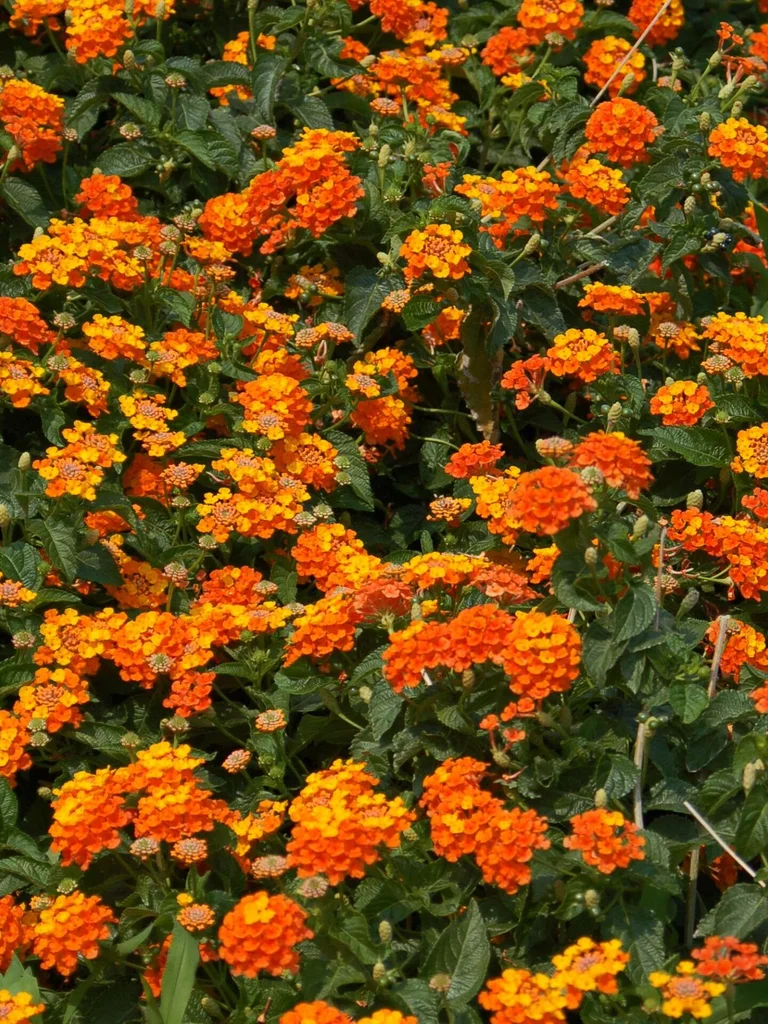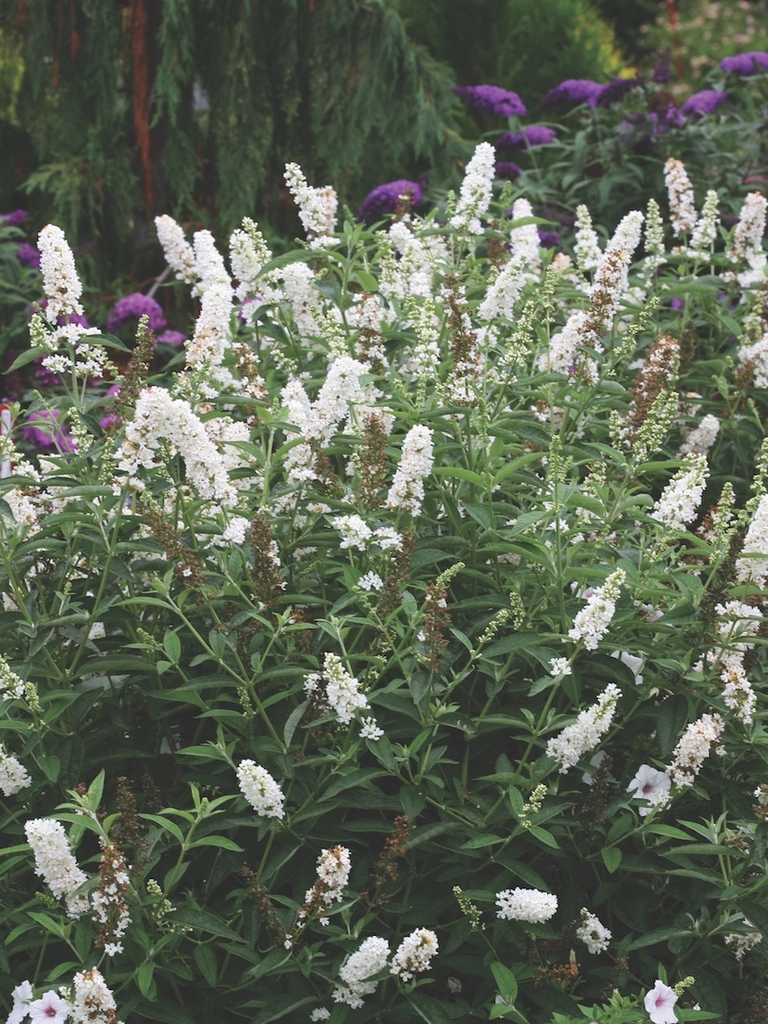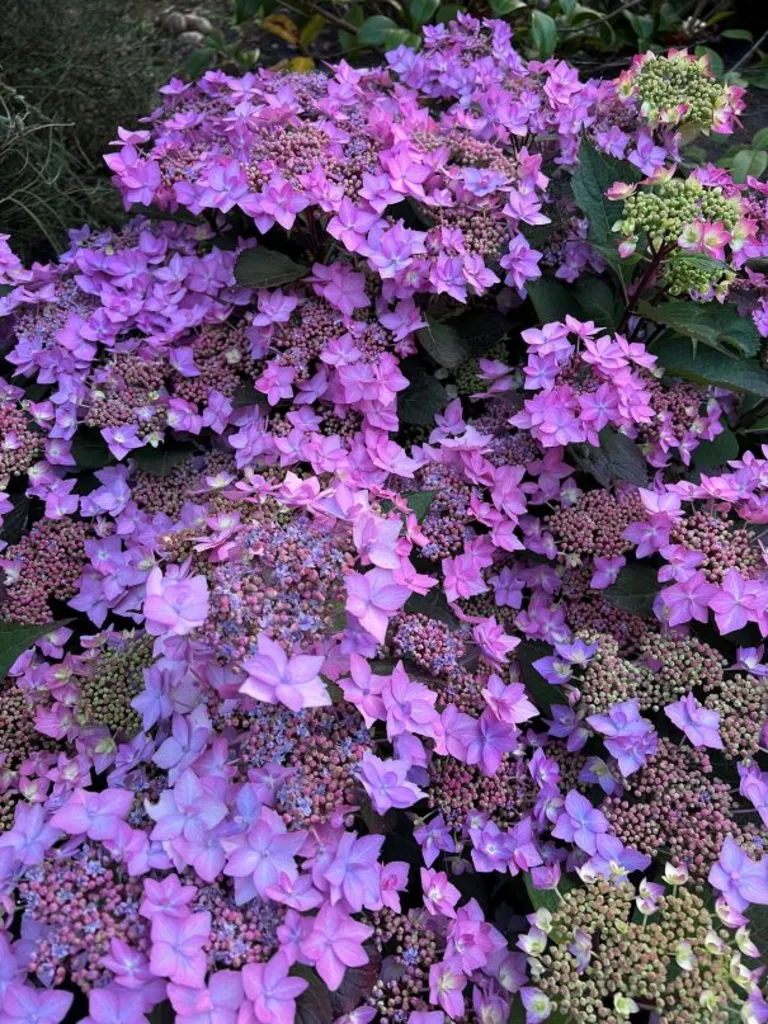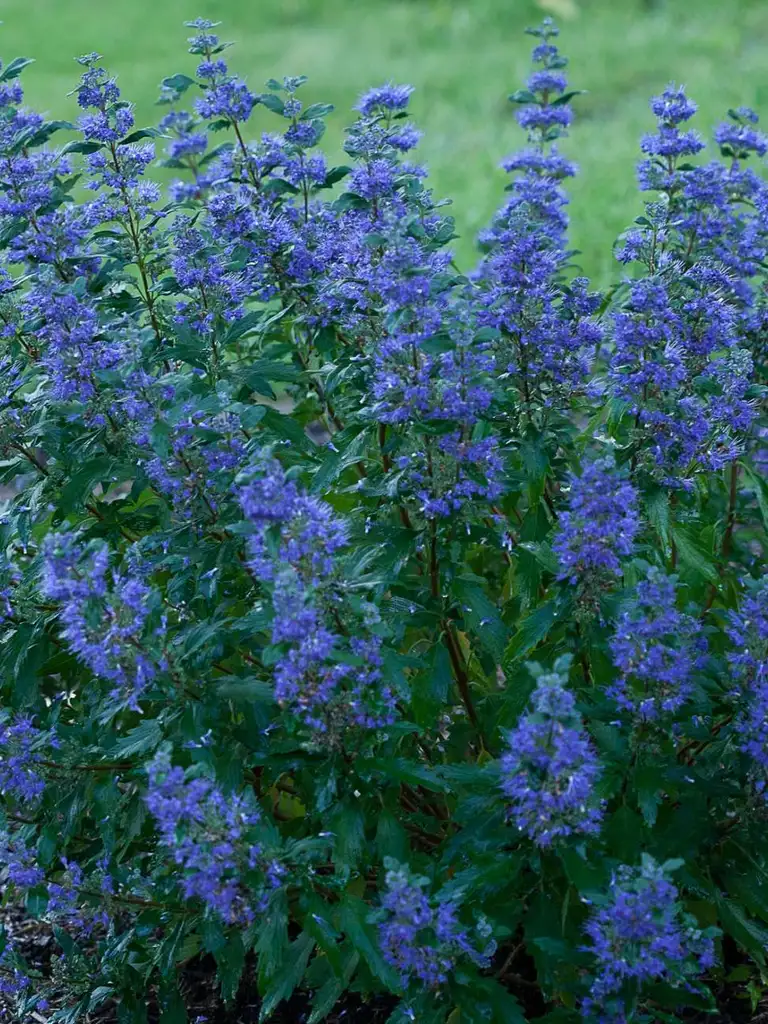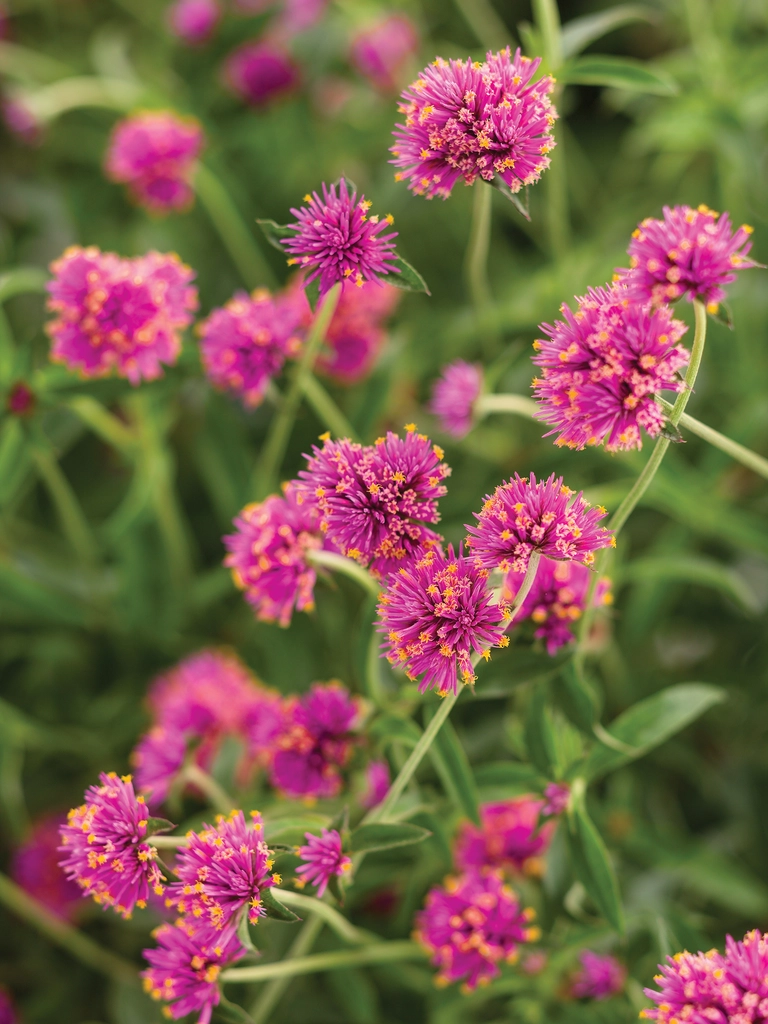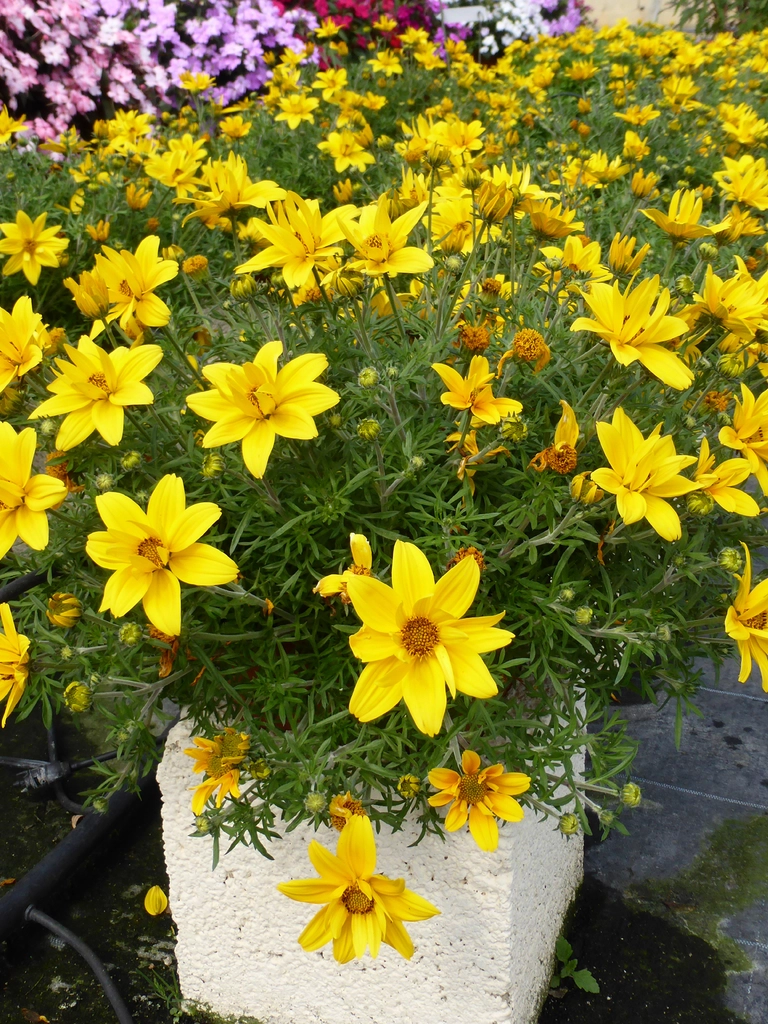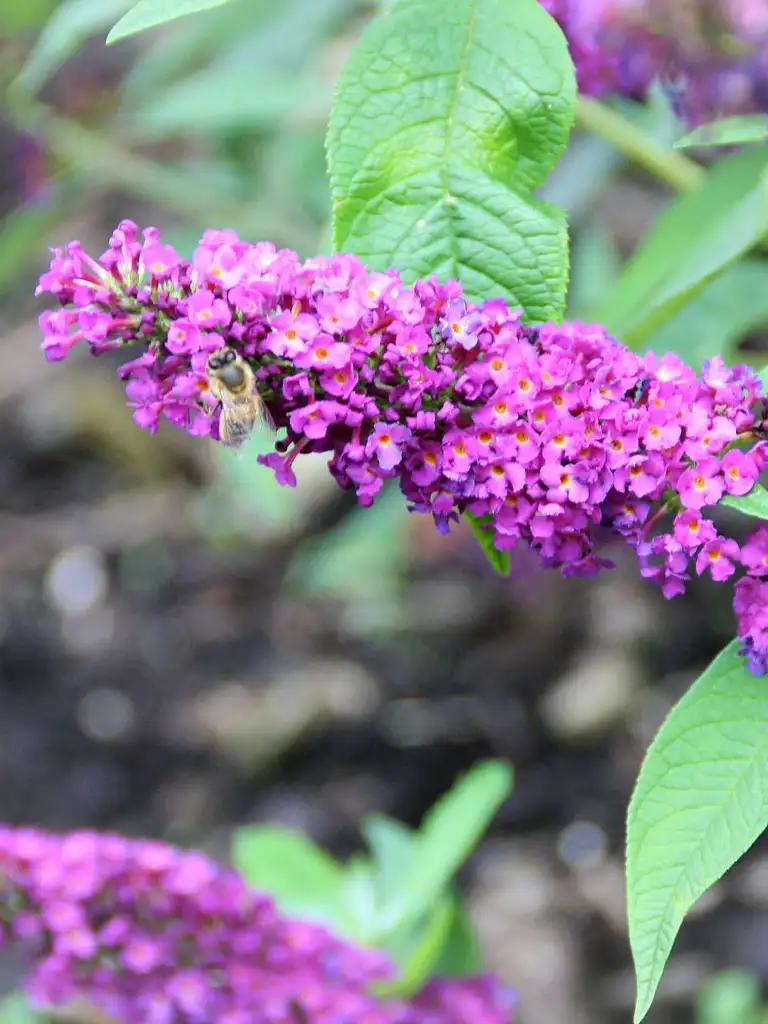Welcome bees into your garden with a vibrant selection of plants! Bee-friendly flowers such as Salvia, Gomphrena, Buddleja, and Caryopteris all attract these vital pollinators. By planting native species, you support local bee populations and provide a continuous source of nectar throughout the seasons. Make sure you avoid pesticides to ensure a safe haven for bees. In this way, you’ll create a buzzing paradise for both bees and yourself to enjoy the beauty of nature.
A bee-friendly garden: plants that attract pollinators!
Annual plants that attract pollinators
Snow princess
It is covered in a mass of small snow-white, honey-scented flowers. Suitable for balconies, bowls, flower beds, and baskets, attract both butterflies and bees.
Calippo
A sun-loving summer stunner! Calippo Orange guarantees the wow effect. It is heat and drought tolerant and attracts birds, butterflies and bees.
Give your garden a buzz
bee-friendly ornamentals
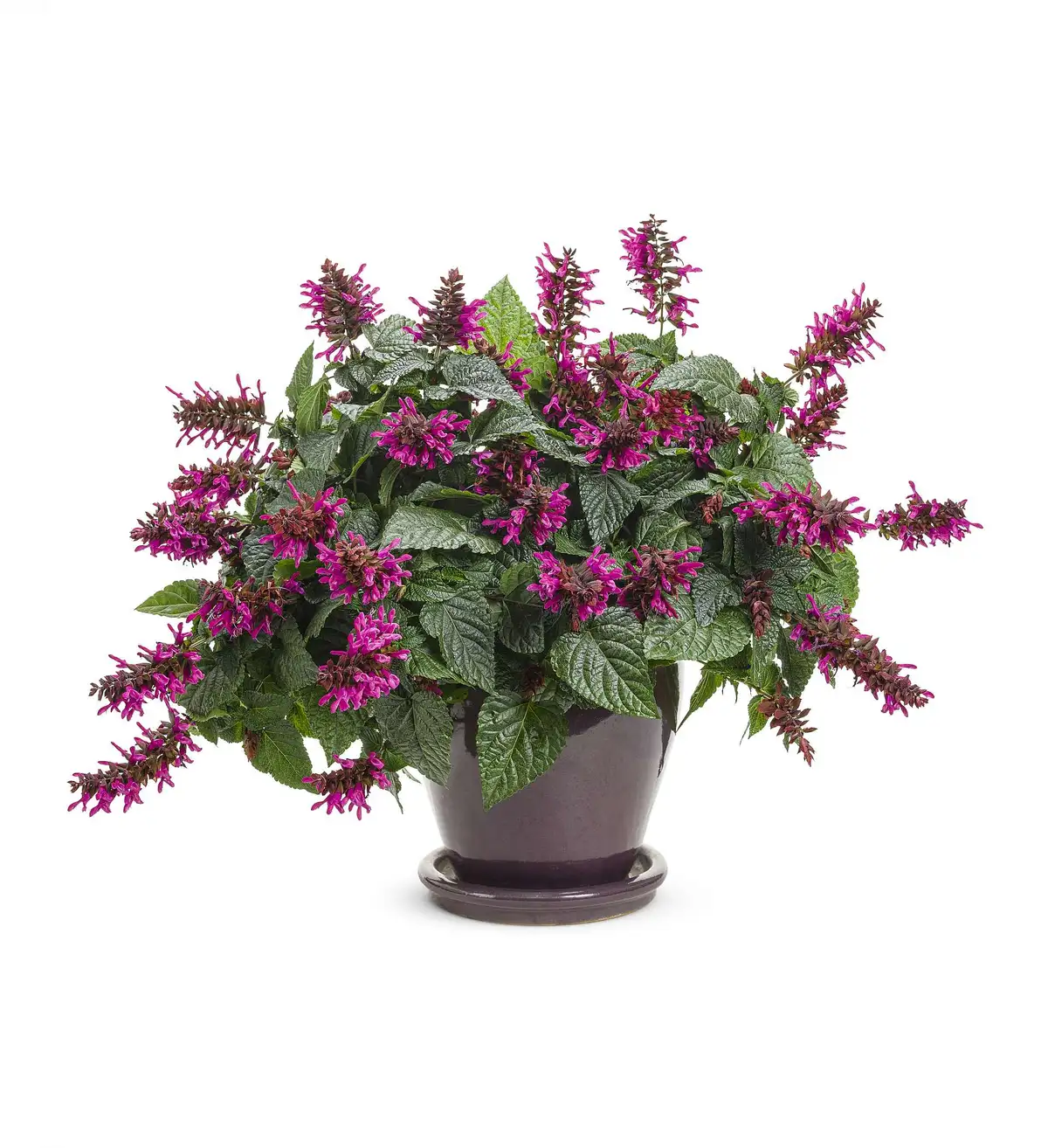
These Salvias really know how to rock! They are much more stocky and compact than traditional tall varieties, which makes them better suited to containers and raised beds. Great favourites of butterflies and bees, these plants prefer full sun or partial shade with free-draining soil or compost. The ideal choice for pots on the patio, the edges of borders or in raised beds.
Petals and wings – attract butterflies and bees
Miss serie
A collection of exquisite butterfly bushes that attract fluttering beauties to your garden. With vibrant colours and fragrant blooms, these plants create a captivating spectacle while providing a vital food source for butterflies.
Flair & flavours®
This extraordinary and naturally compact Hydrangea has large lace-cap flowers with beautiful, soft-pink double florets that resemble water lilies. It flowers all summer long and, like other Flair & Flavours®, it is very winter hardy.
Beyond midnight®
Add colour to your garden in late summer and early autumn with Beyond Midnight® Caryopteris. This plant has a compact habit and combines dark green glossy foliage with wonderful midnight-blue flowers. A real magnet for a variety of pollinators!
3 more beautiful plants that attract pollinators
Truffula pink
This hybrid has a perfectly balanced habit and catches the eye with an abundance of hot-pink flowers. It has performed very well in hot, humid climates, where it blooms all season long.
Bidens
Bidens varieties share two key characteristics: they love sunshine and attracts a multitude of pollintors.
Miss violet
Although these vibrant, long-blooming shrubs sometimes receive criticism for feeding only butterflies and not their caterpillar, or larval, stage, their charm for both humans and hummingbirds is undeniable.
A bee-friendly garden can be created by carefully selecting plants that attract pollinators. Flowers like Salvia, Gomphrena, Buddleja, and Caryopteris are particularly appreciated by bees, providing them with a continuous source of nectar throughout the seasons. Choosing native species helps support local bee populations, and it’s crucial to avoid using pesticides to ensure a safe environment. By doing this, you’ll create a buzzing paradise where both bees and you can enjoy the beauty of nature.
Annual plants are also excellent for attracting pollinators. Compact varieties of Salvias are ideal for containers and raised beds, making them perfect for patios or the edges of borders. These plants, available through Proven Winners®, are favorites of both butterflies and bees, thriving in full sun or partial shade with well-draining soil or compost. An example is Truffula Pink, a Proven Winners® hybrid with a balanced habit and striking hot-pink flowers that bloom all season long, particularly in hot, humid climates.
Another noteworthy plant from Proven Winners® is 'Miss Violet', a vibrant, long-blooming shrub. While it sometimes receives criticism for only feeding butterflies and not their caterpillar or larval stage, its appeal to humans and hummingbirds is undeniable. This plant adds color and life to the garden, contributing to a diverse and lively ecosystem.
